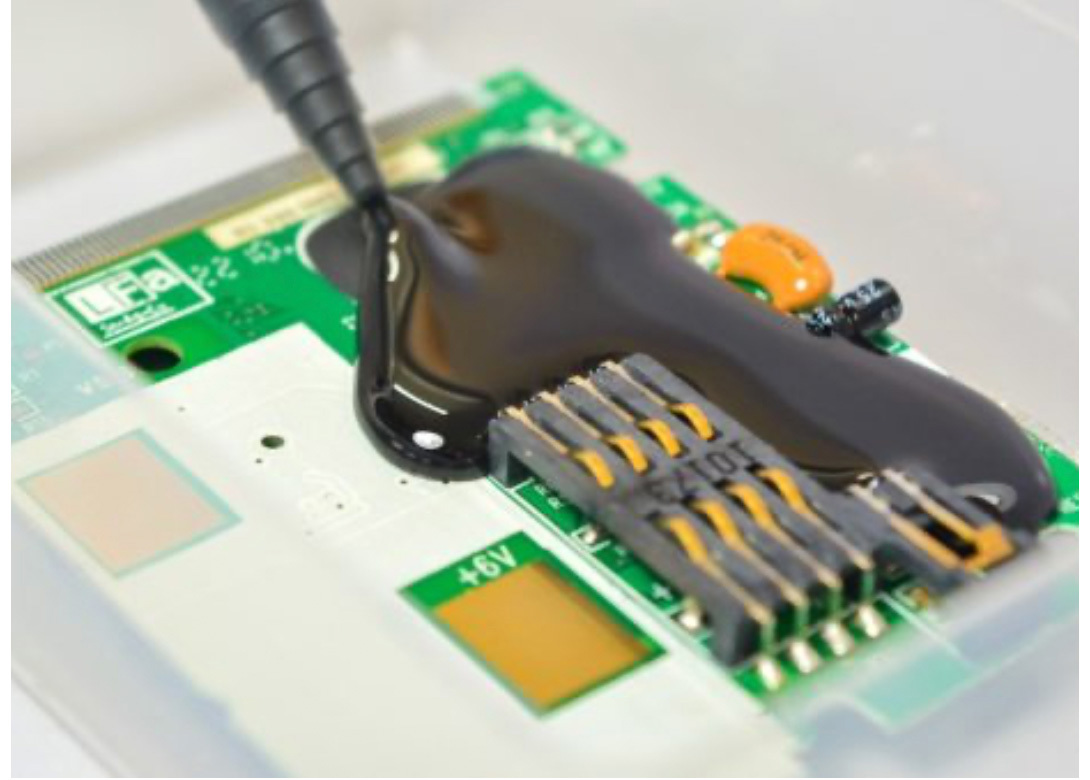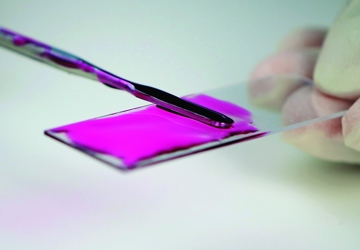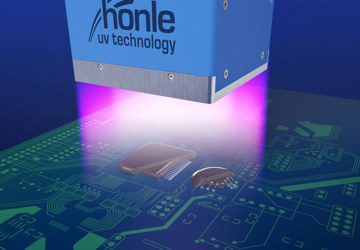

Potting and encapsulation are common methods used to protect electronic and LED assemblies from shock, vibration, and the environment. In applications where it is important to be able to see through the material, manufacturers typically specify an optically clear product. Here Kevin Brownsill, learning and development manager and adhesives, dispensing equipment, and curing specialist at Intertronics, explores the considerations when specifying an optically clear compound.
Sometimes, the circuitry can’t remain hidden. The biggest application for optical potting compounds these days is when the circuitry contains LEDs for illumination, which can be in anything from traffic lights to torches. Another reason for using an optical potting compound is when the electronics contain indicator lights or displays, and these need to be seen. If these circuits require protection from the elements, then there are two main choices – seal them into an enclosure with a clear window, or pot them with a clear resin.
Environmental protection
Manufacturers may need to protect electronic assemblies from dust, debris, moisture, pressure, impact, vibration, and chemicals. The level of protection required from potting or encapsulation depends on the final environment in which the product will function. Underwater swimming pool lights, for example, will need to be fully waterproof to IP68, as well as resistant to chlorine and other chemicals, whereas indoor lighting won’t require such a high level of water resistance. Potting compounds need to be hard or scratch resistant if there’s potential of them being walked on or subject to potential vandalism, for example.
As well as assessing the environment, the design engineer can consider the sector the product will be supplied into. Companies that supply into military assemblies, such as lighting for war ships, may need to consider Mil-SPEC testing of physical characteristics relating to operational durability, ruggedness, and reliability. If the optical adhesive is being designed for application in a medical device, the designer will need to consider meeting ISO 10993.
Specifying an optical adhesive
Once the design engineer has established the level of protection needed and what testing will be required, they can begin to narrow down appropriate chemistries that achieve the desired hardness, clarity, resistance to yellowing, and process benefits.
There are multiple chemistries of optically clear encapsulant and potting compound available including UV acrylics, silicones, epoxies, and polyurethanes (PUs). It is important to note that there is no perfect adhesive, all materials come with advantages and disadvantages that must be weighed up. However, polyurethanes are typically recommended as the first chemistry to test, as they are versatile, reasonably priced and have good UV resistance. Cured, they can be quite resilient or very hard.
One drawback of PUs is that they are sensitive to moisture before cure, so must be kept dry during storage and application. Polyurethanes are hygroscopic and readily absorb moisture from the air, which reacts to form a gas. Consequently, they are packaged in airtight containers and/or with desiccants. Taking care in handling the materials in accordance with the manufacturer’s recommendations can prevent problems later. PCB assemblies protected with PU compounds may need to be baked-out to ensure they are dry. Best practice would suggest cleaning of contaminants, drying, and allowing parts to acclimatise before processing, as well as ambient temperature control during processing.
Epoxies are a cost-effective option, which offer high temperature and chemical resistance and perform well in salt water or mineral/oil-based environments. However, they tend to yellow with exposure to UV/energy, and so are typically selected for applications where yellowing is not as important as other properties. Epoxies are often used for smaller applications, as their exotherm during cure in larger volumes can lead to a loss in clarity.
Silicones offer good clarity, are suitable for potting large areas, and are relatively soft when cured, which can be advantageous for products in environments that are subject to extremes of shock or temperature. They are available in gel formulations, where they retain a jelly-like consistency even post cure. They are UV resistant and tend not to discolour, while offering good temperature resistance of up to 200˚C.
Building a process
When specifying an optical adhesive, considering the packaging material the potting compounds will be supplied in can impact both the manufacturing process as well as costs. For smaller runs, cartridges or twin pack sachets are a more suitable option, whereas for high volume applications, bulk containers might be more efficient.
PU, silicone, and epoxy potting compounds are predominantly two part materials, which means users need to ensure the materials are mixed correctly and dispensed accurately. An experienced adhesives provider offer advice for setting up a repeatable process.
Available process options range from manually mixing and dispensing from a twin pack, dispensing from a cartridge through a static mixing nozzle, right through to metering, mixing and dispensing equipment, fed from bulk containers.
For small area and shallow encapsulation, UV cured acrylics may be a good candidate to trial. They are single part, easy to handle, fast curing, and, compared with room temperature alternatives, reduce work in progress.

Becca is the latest member to join our team and is eager to get stuck into the world of fasteners. She brings an enthusiastic and fresh outlook on what we do editorially and will be leading our social media activity – including sourcing material, editing articles and posting online.





